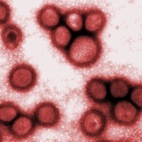Newsletter: Volume 9, Issue 1 September 2005
As many of you know I suffered a fractured heel bone at the end of May and have been recovering ever since. I’m still in physical therapy and realize an older body takes longer to heal. I want to thank you for your continued support, well wishes and help during this time. You have been patient in picking up your pets and putting them on the exam table for me, allowing me to sit down to do exams and waiting a little extra time for me to get medications, etc. Your help has been instrumental in my rehabilitation. Likewise I...




